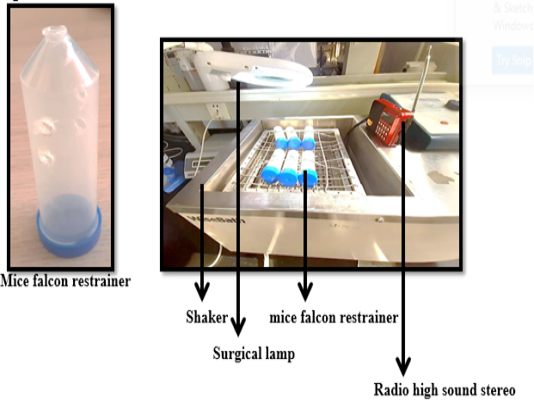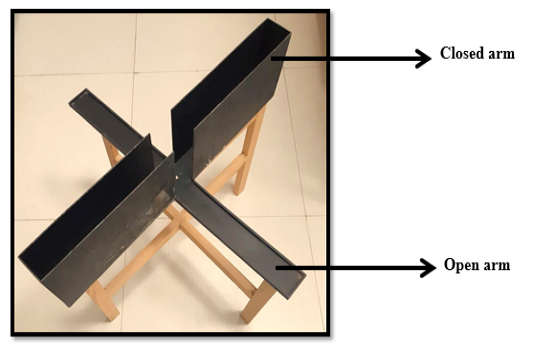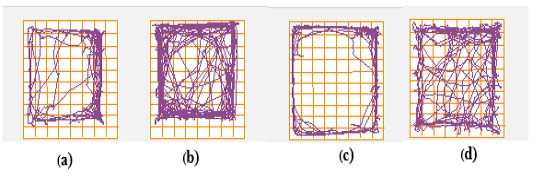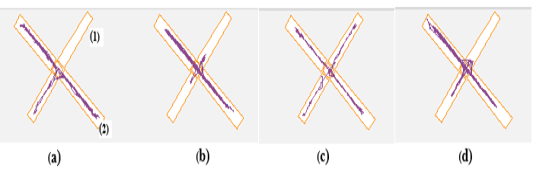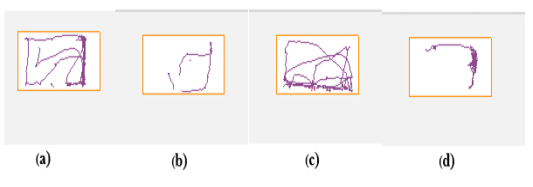Behavioral and Biochemical Performance of Swiss and BalbC Mice Exposed to Multiple Concurrent Acute Stress
Behavioral and Biochemical Performance of Swiss and BalbC Mice Exposed to Multiple Concurrent Acute Stress
Rawda S. Mohamed1,2, Mohammed Y. Matoock2*, Abeer H. Abdelrazek2
Mice falcon restrainer and MAS procedure.
Plus maze test.
Open field track plots.
Open field track plots showing the position of the center of the animal (a) BC Balb/c control, (b) BMAS Balb/c multiple acute stress, (c) SC Swiss control, and (d) SMAS Swiss multiple acute stress groups.
Plus-maze track plots.
Plus-maze track plots show the position of the center of the animal, where (1) is the open arm, and (2) is the closed arm. (a) BC Balb/c control, (b) BMAS Balb/c multiple acute stress, (c) SC Swiss control, and (d) SMAS Swiss multiple acute stress groups.
Dark light activity box track plots.
Dark light track plots showing the position of the center of the animal in the light portion, where (a) BC Balb/c control, (b) BMAS Balb/c multiple acute stress, (c) SC Swiss control, and (d) SMAS Swiss multiple acute stress groups.





